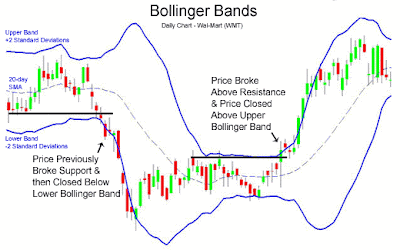- Moving Average: By default, a 20-period simple moving average is used.
- Upper Band: The upper band is usually 2 standard deviations (calculated from 20-periods of closing data) above the moving average.
- Lower Band: The lower band is usually 2 standard deviations below the moving average.
There are three main methodologies for using Bollinger Bands, discussed in the following sections:



